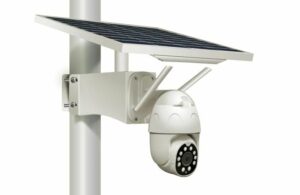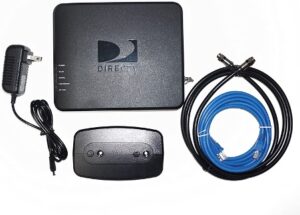Looking for a way to connect a wireless extender to a Verizon router? If so, it means you do not really trust your router to cover the entire area of the house.
There’s no doubt that Verizon delivers world-class Wi-Fi and high-speed Internet to its customers. However, its signal may not always be strong enough to meet your needs; here is where a Wi-Fi extender comes in handy.
To use a Wi-Fi extender with your Verizon router, all you have to do is follow the device’s proper instructions, which will vary depending on the type of device you buy.
This post will explain how to determine whether or not you require a Wi-Fi extender, how to connect a Verizon extender if you choose to use it, and how to configure a different model Wi-Fi extender to work with your Verizon router.
No products found.
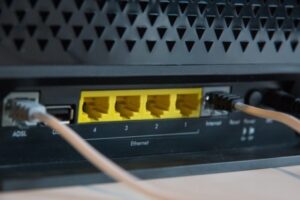
Do I Need A Wi-Fi Extender?
Before we get into the details of how a Wi-Fi extender works, let’s take a look at why you might want to buy one.
Wi-Fi Deadspots Inside Your House
Is there any part of your house where your Wi-Fi isn’t working? The area where your Wi-Fi is not reaching is known as a Wi-Fi dead spot.
For example, perhaps your Wi-Fi signal is strong in the room where your router is located, but it is much weaker in your home office downstairs, or it is too slow to stream movies without glitches or buffering in a room on the other side of the house.
This is because when the distance between the router and the device increases, the signal strength decreases.
Wi-Fi Coverage is Poor in A Large House
Do you live in a really huge house, perhaps on a single level or on numerous levels? Then you will undoubtedly require a Wi-Fi extension.
If you have a larger home, try placing your Wi-Fi router in the most central spot, but you’ll almost certainly need to use a Wi-Fi extender to get your signal to the far corners.
Wi-Fi is Slower Than Ethernet in Terms of Connectivity
If you have a fine cable connection in your attic but poor Wi-Fi coverage, you may need a Wi-Fi extender to fix the problem.
Multiple Users at The Same Time
Multiple people connected to the same Wi-Fi simultaneously increase loading time by using the same bandwidth, resulting in poor speeds. As a result, the best choice for expanding the Wi-Fi network’s coverage area and allowing everybody to connect to the Internet is to use a Wi-Fi extender.
What Wi-Fi Extender Options do I Have?
You must probably have the Verizon gateway or router because you’re a Verizon customer. Keeping this in mind, the first big decision you’ll have to make is whether to acquire a Verizon Wi-Fi extender or something else. Each option has advantages and disadvantages.
It is, however, recommended that you choose a Verizon Wi-Fi extender because you can be confident that it is compatible and that the setup process will go successfully.
However, if you already have another brand on hand, or if you want to buy anything different because of the price, allegiance to the other company, or another special feature, that will also work. This could take a few extra steps to set it up, but any compatible extender will eventually do the trick.
Connecting Verizon’s Wi-Fi Extender to The Verizon Router
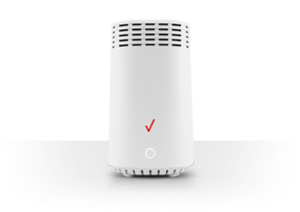
https://www.verizon.com/home/router/
Using WPS
The WPS option is available on both the extender and the router. WPS, which stands for Wi-Fi Protected Setup, is the simplest method of connecting any wireless device to the network.
- Press the pairing switches on your Verizon router and the extension to establish a WPS connection. When pairing, keep the devices within a meter of each other to guarantee the quickest possible pairing.
- The LED light will turn blue after the connection is made.
- Check for a Wi-Fi signal and strength by moving the extension to the desired areas.
You will now be able to connect your devices to the Wi-Fi extender once you’ve made a connection.
Using Ethernet Cable
- Connect the extender to the router by plugging one end of the Ethernet cable through one of the router’s LAN ports and the other end into one of the extender’s ports.
- Switch on the extender and wait for it to turn solid white.
- Switch off the extender, unhook the Ethernet cable, and transfer the extender to a central place once it is white.
- Don’t be concerned if the light goes yellow after unplugging the Ethernet cable. The extender is simply too near to the router.
Using Other Brands of Wi-Fi Extenders
Now, if you want to use a different brand of Wi-Fi extender to connect to your Verizon router, don’t worry; you can connect it via WPS. However, if it doesn’t work for whatever reason (it doesn’t support WPS), then you will have to configure it manually.
During the configuration procedure, plug the Wi-Fi extender into the same room as the router.
After you’ve turned it on, search for available networks on your computer or smartphone. Look for one that has the same name as the extender brand. Link to that network once you’ve found it. Now open a web browser and type the IP address written on the extender into the address bar.
Note: Some models offer an app for setting up the extender, so check the instructions that came with it.
To connect the extender to the router, go to the extender’s admin interface and follow the simple setup steps.
Can I Connect My Wi-Fi Extender to Verizon Using a Third-Party Router?
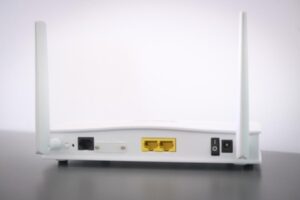
Routers from third parties are permitted. It’s only that you’d have to be provisioned for Ethernet to use a third-party router, which means you wouldn’t be able to use VOD, guide, or any other improved capabilities with your video subscription. So it’s legal, but Verizon doesn’t support it. Basically, you’re on your own when it comes to troubleshooting.
However, going with the Verizon extender is always advised because it saves you time in seeking a compatible Wi-Fi extender. Not all extenders will work with all routers, and buying the wrong one will be a waste of time and money.
Pros of A Wi-Fi Extender
Wi-Fi extenders all have their own set of advantages. And buying one could be one of the best decisions you ever make.
It’s always reassuring to know that you’ll be able to make an educated decision once you’ve learned more about the advantageous features of these products. The following are the details:
Increased Wireless Range and Coverage
Integrating a wireless extender into your home will widen the range of your wireless network throughout the premises, which is one of the key benefits of Wi-Fi extenders. It functions as a repeater, amplifying your router’s signal.
Fast Speed
Imagine doubling your Wi-Fi’s speed in a couple of seconds. That’s precisely what will happen when you connect your present Wi-Fi connection to a fantastic Wi-Fi extender. Without any expensive settings or extra connections, you can move from KBs to MBs in a flash. So why would you settle for anything less than insanely high speeds?
Easy Setup
The majority of Wi-Fi range extenders now have automatic settings and plug-and-play functionality. To put it to use, you don’t require any technical knowledge.
These extenders may be set up in a matter of minutes, whether you have an Ethernet cable or not. The best part is that there aren’t as many wires to deal with.
All you need to do is follow the simple directions and locate a suitable location to plug in your Wi-Fi extension. Many will even have indicators to show you which portion of your home has the best signal.
Reusing Your Current Router
If you have outdated routers lying around your house, you can recycle them and use them as repeaters. This allows you to repeat the signal to regions of your home where you may not have a strong wireless signal.
As a result, you’ll be able to employ older hardware that you probably weren’t using anyhow and save money by not having to buy new equipment.
Cons of A Wi-Fi Extender
As it is with anything else, Wi-Fi extenders also come with their set of downsides.
Poor Signal
Although the extender will help to spread the signal across your home, it will not solve the problem of a weak signal in the first place.
A repeater receives a signal, analyses it, and then rebroadcasts it over many channels. This procedure is bi-directional, meaning it goes from the computer to the router and back again. As a result, the quality of your network will deteriorate.
Compatibility Issues
Setting a range extender from a different manufacturer to work with the router can be a difficult undertaking, and this could result in incompatibility or inoperability issues. Therefore, it is recommended that you get the same brand as the router.
The repeater typically has its own SSID and password distinct from the router’s SSID.
Setting Up A New Brand from The Ground Up Can be Challenging
Some extenders aren’t compatible with all Wi-Fi services. While some like TP-Link AC1200, Wavlink, and Rock Space Wi-Fi extenders are compatible with Verizon Fios, some may not.
But don’t worry, there will be others who will. Another reason why compatibility is so important is that it can mean the difference between investing in a wonderful extender and one that disappoints due to incompatibility.
FAQS
Here are a few other common questions people ask.
Does A Wi-Fi Extender Slow Down Internet Speed?
The Internet is not slowed or sped up by Wi-Fi extenders. Instead, they work by amplifying the Wi-Fi signal from your modem and broadcasting it throughout your home or wherever you go.
How Can I Tell if My Verizon Wi-Fi Extender is Working?
Connect the Router and Extender’s power wires to an electrical outlet. The light on the Extender should turn full white after 10 minutes, indicating that the connection is complete.
How Far Away from The Router Should The Verizon Extender be?
To make an initial connection with the Network Extender, you must be within 15 feet of it each time you want to connect.
Final Thoughts
In conclusion, Verizon FiOS is a fast and trustworthy Internet Service Provider. Choosing the right Verizon FiOS Wi-Fi extender guarantees that you have a stable and fast Internet connection in your workplace and at home.
Hopefully, these instructions on how to connect your Verizon router to your Wi-Fi extender are straightforward and simple to understand.

